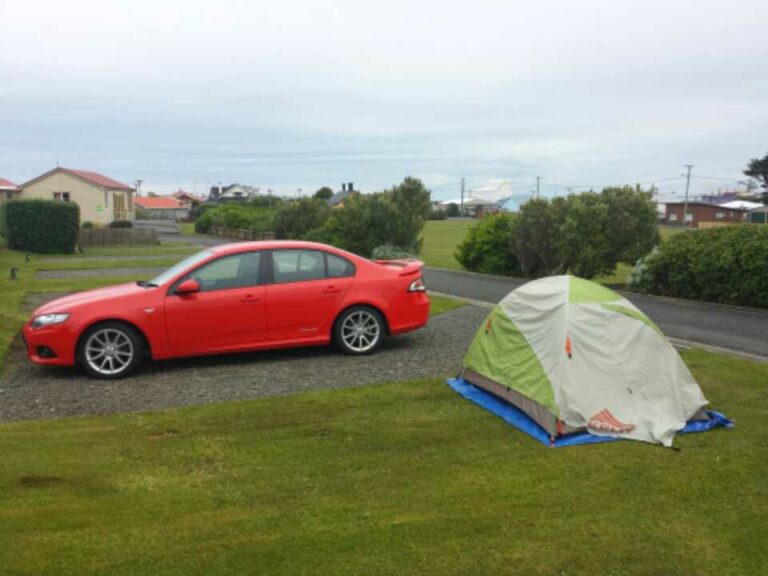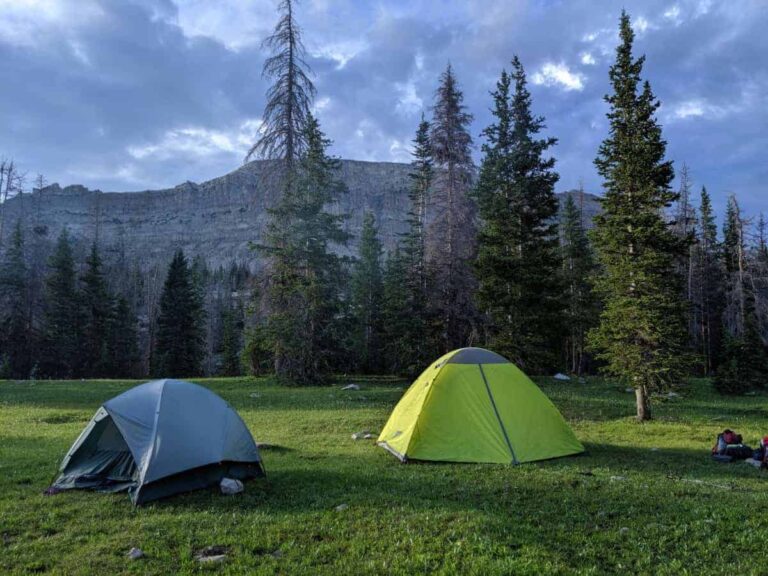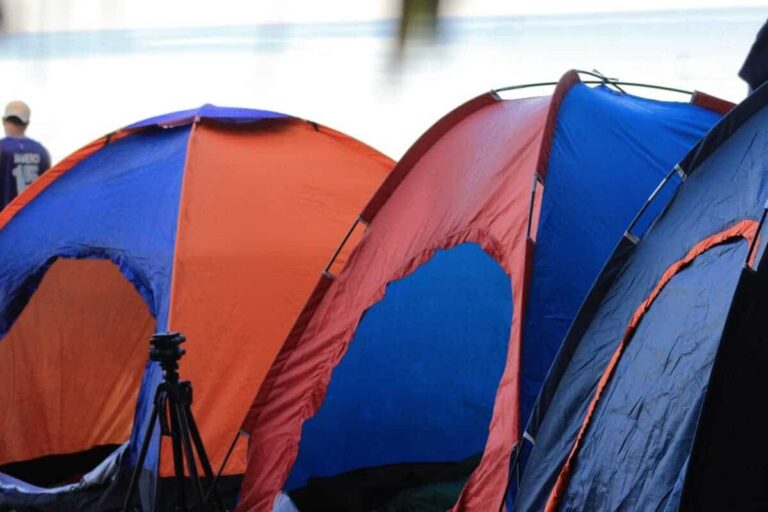Failproof Hiking Lunch Ideas: Easy Some-cook And No-cook
Stuck in a rut when it comes to your camping lunches? Time to look for some meals to try out!
Are you sick of sandwiches? Tired of protein bars? It’s so easy to end up bringing along the same old foods when you’re going on a hike. Maybe you don’t want to put the effort into cooking, or maybe you’re afraid you’ll end up bringing something you don’t enjoy.
Not to worry. There are several fresh lunch ideas that you can bring on your hiking trip. No matter how much effort you’re willing to put in, there are food options that can keep you strong while you’re enjoying nature.
Continue, and you’ll discover some fantastic some-cook, prepared, and no-cook lunch ideas that you can enjoy on your hikes.
Looking for hiking snack ideas to go along with your hiking amazing lunches? Check out our mega list of hiking snack ideas for every situation.
Just Add Water Lunch Ideas For Hiking
There’s no denying that a hot meal can really be refreshing when you’re out hiking. Cooking may not always be the most convenient, but it can result in some delicious meals on the go. Below, I’ve compiled a list of some great warm meals you can enjoy for your hiking lunches. Most of these recipes only include the addition of some hot water. It’s amazing what you can do with so little!
Oatmeal
Oatmeal is filling, tasty, and loaded with fiber. Consequently, it makes for a great meal while you’re on the hiking trail. While many hikers may see this as an ideal breakfast option, there’s no reason you couldn’t have some for lunch if it sounds appealing.
There are a few ways you can go about making and bringing oatmeal on your journey. Some hikers might want to make their own oatmeal ahead of time. If you really want to get creative, you can opt to try out some interesting overnight oat recipes where you simply add the ingredients together in a jar and wait overnight.
On the other hand, those who would rather save the cooking or preparation for their journey can just add some hot water to a premade or homemade oatmeal for delicious results.
Freeze-Dried Meals
If convenience is important to you while you’re hiking, then you might decide to bring along some freeze-dried meals rather than cooking or preparing your own. Brands like Mountain House, Packit Gourmeti, Peak Refuel, and Next Mile Meals are highly favored by many hikers.
Freeze-dried meals are excellent for backpacking because they’re very lightweight and compact. In most cases, all you need is to add water and you’re ready for a delicious meal. If you’ve never tried freeze-dried meals before, then it’s wise to try a few of the flavors you’re interested in before the trip. That way, you don’t end up bringing along meals you aren’t going to enjoy.

Ramen
Hikers looking for an easy, inexpensive route can add a few packets of ramen to their pack. It may not be the fanciest option, but it’s easy to carry, cook, and consume. Ramen packets are lightweight, so they won’t be an issue to add to your pack.
Once lunchtime rolls around, all you need to do is add some hot water to get things cooking. On the other hand, dry ramen can be just as enjoyable if you don’t mind the crunch. If you want to get extra creative, you can even choose to add in some vegetables, eggs, or other seasonings to make the meal a bit more gourmet. The sky is the limit.
Boiled Eggs
Boiled eggs can make for a quick and easy protein. If you’re just going on a day hike, you can boil them ahead of time and they should keep for a few hours. Just try to cool them down as much as possible before you head out on your hike.
If you’re taking a multi-day trip, you might need to change up your habits a little bit. This starts with getting eggs that haven’t been kept in a fridge (unwashed fresh eggs). If you can carefully pack them, they should be okay to boil as needed during your journey. You’ll just have to be a little more careful about making sure they haven’t gone bad.
For more info about storing eggs while hiking, you can read about using a water bottle as a way to store eggs, here.
Dry Starches
Starches like potatoes and rice are often a staple in meals. They add bulk to the overall meal. Rice is often light enough to lend itself well enough for backpacking meals – though the packaging can sometimes take up space. On the other hand, potatoes are quite heavy and don’t make a lot of sense to bring in your pack.
Instead, many hikers recommend using Idahoan Potato packs (Amazon). These packs are lightweight and contain 4 servings per pouch. When you’re ready to make them, all you need to do is add water. You can also add butter or margarine, but it isn’t necessary. Rice can also be found in similar pouches. Ben’s Original (see on Amazon) offers a variety of rice options that can cut down on space, weight, and time to prepare.
Simple Pasta
As long as you keep it simple, pasta can be a very easy food to bring along while hiking. If you’re planning on cooking your pasta at home and eating it during the hike, then you can get a little more gourmet if you want to. The simplicity is really best for multi-day hikes when you’re going to be cooking during your journey.
Pasta is lightweight and it doesn’t take a lot to make it enjoyable. Because of that, it’s easy to bring along on backpacking trips. In addition, you can just add a little marinara sauce, cheese, or other simple flavorings that will make the pasta more interesting. Beyond that, all you have to do is add water.
A super simple meal that I eat for lunch at home frequently is pasta with either olive oil and salt and pepper or butter. (Maybe a splash of vinegar as well). Additionally, if you like the sour a bit you can use Italian dressing with cooked pasta to make a carb-heavy, simple, but delicious meal.
If you’re concerned about taking all the spices in the kitchen so you can eat, consider a multi-seasoning pack like this one on Amazon. We have one of these and it’s amazing what a few spices can do to save an otherwise bland meal.
Make-Ahead Lunch Ideas for Hiking
These meals are typically ones that need to be put together in some capacity before the hike. This might just be slicing some things up and putting them into bags or containers, or putting together something like a sandwich. For the most part, they don’t require cooking unless that’s an extra step you want to take.
Bringing prepared meals rather than meals that require cooking can really help to lighten your load. After all, too much weight can become a serious problem when you’re on the go. This is especially true when you’re going on a multi-day backpacking trip. How much weight should be in your pack? Learn more in our article on the subject here.
Granola
Although you can purchase premade granola to use on your hiking trip, making your own can afford you a wider variety of options. Another great benefit of granola is that it’s a highly versatile food. You can have it for any meal of the day, or even just as a snack.
When making your own granola, start with the toasted oats. Beyond that, you can add in whatever ingredients you like. Often, people will use different kinds of nuts and/or seeds, Craisins, coconut or olive oil, coconut flakes, honey, or even chocolate chips. There’s a lot of wiggle room when it comes to granola, so you can feel free to experiment to find the version you like most.

When we make granola we typically make the entire container (about 11 cups of oatmeal). I’ll just share what we put in our granola for reference, but you can try experimenting with your own:
Dry ingredients:
- 1 Entire Container of Traditional Oats (about 11 cups)
- 1/3 cup of Brown Sugar
- 2 tsp. of cinnamon
- 1 tsp. of salt
Wet ingredients:
- 3/4 cup honey
- 1 scant cup of vegetable oil (something like 7/8s of a cup)
- 1 1/2 TB. of vanilla
Instructions
- Heat the oven to 300F
- Mix the dry ingredients with the oats
- Mix wet ingredients separately
- Pour the honey, vegetable oil, and vanilla (all mixed together) into the dry ingredients mixed with the oats
- Mix thoroughly
- Lay out the granola on a big baking sheet
- Cook for 15 minutes.
- Take out the granola and stir it to expose more granola
- Put it back in for 5 minutes. (You can put it in for 15 minutes the 2nd time if you like more crunchy granola)
Chicken Salad
Chicken salad is a lunch that can be either be make-ahead or no-cook, depending on the chicken you decide to use. If you’re okay with using something like a Starkist chicken pouch, then you can easily just mix in some mayonnaise and you’re good to go.
Else, you can cook up some chicken ahead of time in whatever way you like best, shred it, and mix it with some mayonnaise.
Once you have that mixture, you can eat it on some crackers, in a wrap, or as a sandwich. It depends on what you enjoy. If you’d rather have freshly-cooked chicken, then it will take a little more work. Additionally, that chicken may not last as long as the pouched varieties. It’s all a matter of what effort you’re willing to put in as well as your personal preferences.
Burritos Or Wraps
Sandwiches might be a popular go-to, but bread can get soggy or flattened pretty easily. Tortillas, on the other hand, are much more durable for taking on the go. They’re also more suitable for multi-day trips. A pack of tortillas definitely takes up less space than a loaf of bread.
With your tortillas in hand, you can make burritos to take on the go. If you make them beforehand, they may get a bit cold by the time lunch rolls around – so be prepared for that. If you’d prefer to avoid cold burritos, you can make a wrap instead. Like sandwiches, wraps offer a lot of variety that can help to keep things interesting while you’re on the trail.
Whether you’re cooking while backpacking or camping, it’s important to clean up after yourself. Leaving litter around is not only bad for the environment, it’s also bad etiquette. If you want to know how you can follow hiking etiquette while you’re out in nature, take a look at our article on the topic here.
Sandwiches
When it comes to easy foods to prepare for a hike, sandwiches are often quick to come to mind. There are so many options when it comes to different kinds of sandwiches you can make, including different bread and protein options that can keep things from getting too stale.
Don’t forget that you’re probably going to need something more nutritionally dense when you’re on a hike – as opposed to what you might bring to work. Ingredients like meat, cheese, nut butter, and denser types of bread are going to be highly important. You might even bring multiple sandwiches to enjoy throughout the day. It’s better to have too much food rather than not enough.
To avoid soggy bread, make sure to store your bread separately from any liquids until you’re eating it.
Hummus & Pita
Hikers who are a fan of hummus might enjoy taking it to eat on the go. With some pieces of pita bread, vegetables, or other dipping delights, you’ll have a healthy lunch or snack for your hikes. Hummus provides you with protein and fiber to keep the energy flowing.
It is important to keep in mind the type of hummus you bring with you. Many store-bought versions are refrigerated and will only last a few hours outside of ideal temperatures. That said, there are also shelf-stable varieties you can opt to bring on a multi-day hike. Lilly’s Hummus is a great example of shelf-stable hummus that comes in individual containers.
Apples & Peanut Butter
Apples and peanut butter are a great pair. The combination gives you a dose of sugar alongside plenty of healthy fats to keep your energy levels up. It’s also easy to put together. All you have to do is slice up an apple or two and put some peanut butter into a container or sandwich bag. When you’re ready to stop for lunch or a snack, this pairing will be good to go.
If you aren’t a fan of either of these ingredients, you can also make combinations that suit you better. Maybe you prefer Nutella to peanut butter. Perhaps you want more variety in the fruit you bring. This is just the starting point – the details are really up to you.
Energy Balls
Energy balls can be fantastic to bring on hiking trips. They’re packed with calories and healthy fats. On top of this, they’re delicious! You don’t have to cook them or worry too much about keeping them cold because they’re made using ingredients that are perfectly happy on the shelf.
One of the best recipes I’ve found is this No-Bake Energy Ball recipe from allrecipes.com. This recipe is made up of peanut butter, oats, flaxseed, honey, vanilla, and chocolate chips. Once you’ve prepared them, you can place the energy balls in the fridge if you have some time before your trip. While they don’t need to be kept cold, this can just help to limit how sticky the peanut butter is when you go to eat them – meaning less mess for you to deal with.
We love these for when we’re traveling, and just a couple will help you feel refueled.
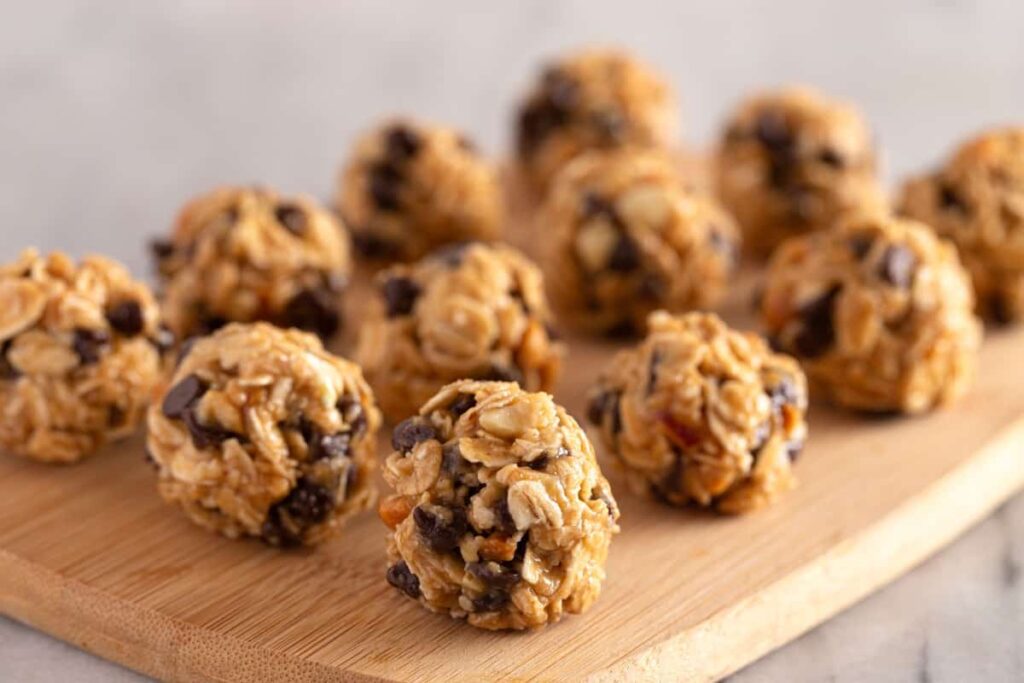
Trail Mix
Although trail mix can certainly be purchased already prepared, you can also make your own. Creating your own trail mix is a fantastic way to end up with something you’ll enjoy. You can also change it up to help with meeting certain nutritional goals.
If you like more variety, you can add more nuts or dried fruits. You may even decide to add some different ingredients into the mix such as seeds, candy or chocolate, popcorn, pretzels, or whatever else seems appealing to you. Store-bought trail mix often includes peanuts, but there’s no reason you couldn’t use walnuts, pecans, or even hazelnuts instead.
We’re constantly experimenting with different trail mixes. Here are some ingredients you can try to mix and match:
- Dark chocolate chips
- Big unsweetened coconut flakes (not the tiny flakes)
- Walnuts
- Dehydrated apple (or freeze-dried)
- Sliced almonds
- Dried cherries
- Dried cranberries (craisins are okkkkkayy, but we prefer the dried whole-cranberries)
- Good ol’ raisins or California raisins
- Halved pecans
- Pumpkin seeds (pepitas)
- Sunflower seeds (hulled)
To name a few.
No-cook Hiking Lunch Ideas
Not everyone wants to cook or even prepare lunch for a hike. Maybe you just want something you can unpackage, eat, and enjoy. Although you might end up paying for the convenience in some cases, there are plenty of options out there. Meal bars, jerky, and hard cheeses are popular options for hikers, but those aren’t the only options. In this section, we’ll take a look at foods you won’t have to cook or even cut up before eating.
Bagels
While they might not be as popular as some other food items, bagels can actually be quite useful to bring along on a hiking trip. They work well as a snack, or as a meal if you bring along some additions to put on them. You can even treat them like sandwich bread if you want to.
Cream cheese, salami, cheese, peanut butter, and even avocado can make for great bagel toppings. Because they are so versatile, you can easily bring along a package of bagels and a few of your favorite toppings for a multi-day trip. Just keep in mind that some toppings may need to be kept cold – so you will have to plan for that.
If you’re creative, though–you can use those little packets of cream cheese or butter that will keep indefinitely. Fresh bagels will last for several days without spoiling which makes them great trail food.
Summer Sausage & Crackers
Another fantastically-easy hiking lunch involves summer sausage and crackers. While this can be an option you don’t have to prepare, you may decide to lighten the load by packing only what you need. Slicing up summer sausage and putting some crackers into a sandwich bag doesn’t take long at all. You might even decide to throw some cheese in.
Summer sausage is a convenient protein choice because it can often go for long periods of time without being refrigerated. Ideally, once the wrapping around the sausage has been opened, it should be kept cool. That said, it should be okay if you’re just going for a single-day hike.
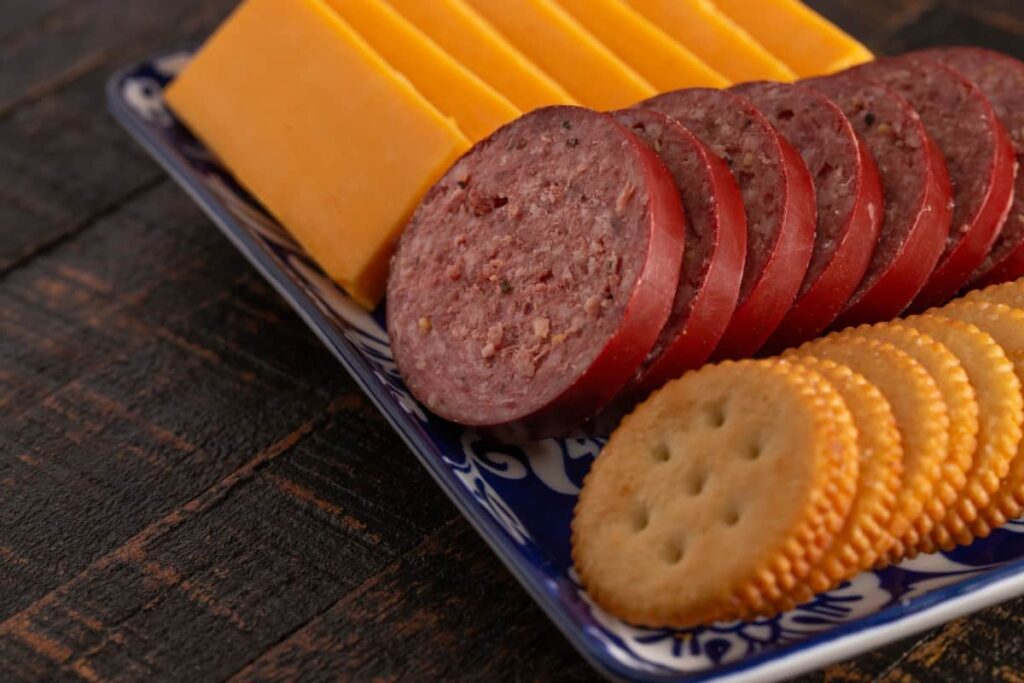
…
Maybe I shouldn’t tell this story. But one time we were in the High Uinta mountains at a campsite we hiked 12 miles to get to when one of the kids in our group found a gigantic summer sausage (still in its plastic wrapping) that you can only get from Sam’s Club or Costco. This sausage must have been 5 lbs and whoever was eating it before took a couple of slices and left the rest.
I didn’t eat any, but my dad did as well as several of the nieces and nephews that were with us. Nobody got sick at least. Not that I’m advocating eating strange summer sausages you find in the woods, 12 miles from any developed roads.
Muesli
If you’re not interested in making your own granola, or if you want a healthier alternative you can find packets of muesli pretty easily (I’ve seen a ton of them at REI). These are packets of uncooked oats and several different things you’d find in a fancy trail mix.
You can of course, make your own muesli using several similar ingredients to granola minus baking the oats and putting in the oil and sugar.

Meal And Snack Bars
Meal bars are one of the easiest food items to take on a journey with you. They’re prepackaged, light, and easy to eat without any preparation. Because of these benefits, hikers often rely on them a lot while they’re on the go.
Additionally, there’s a huge variety of different bars you can take on your hikes. In my research, I found that hikers favored brands like Quest and Clif bars as well as other varieties like fiber bars and granola bars. With so much variety, it’s easier to keep things interesting. Different flavors can help you to avoid burnout on any one type, and you’ll only have a wrapper to carry out with you.
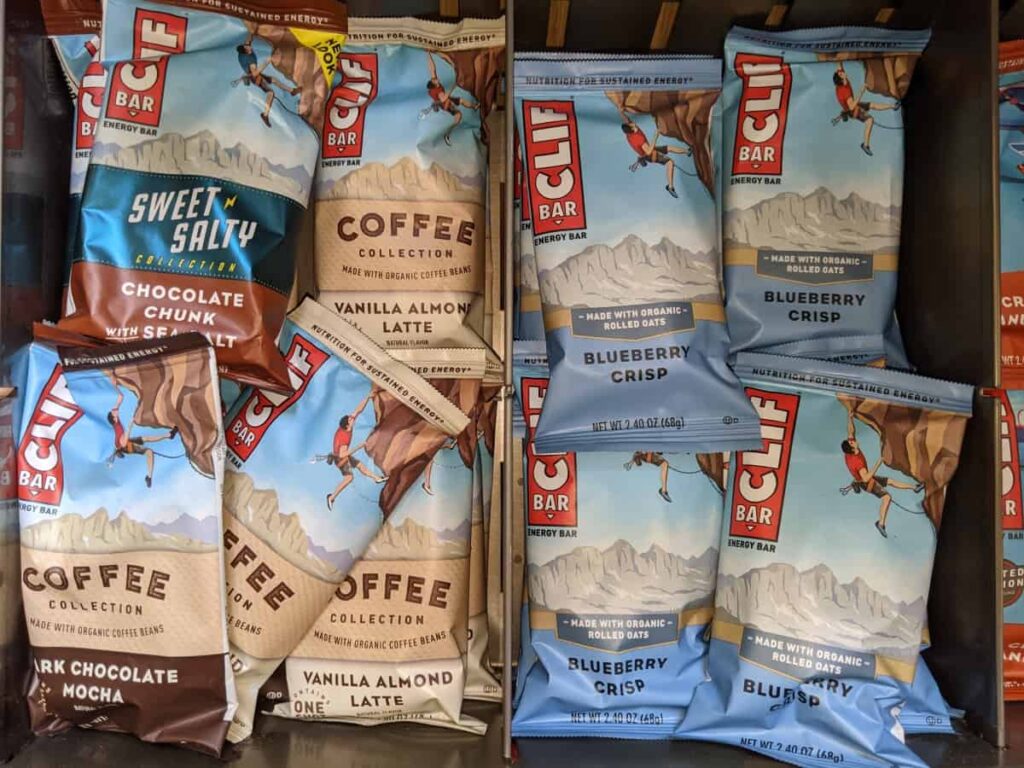
Dried Fruits
Although dried fruit can be something you prepare yourself prior to a hike, it can also be easily purchased from most grocery stores. Raisins, prunes, apricots, apples, and more can all be found in either dried or dehydrated versions.
Not only are dried fruits a fantastic way to get vitamins and minerals, but they also take up a lot less space than whole fruit. You can bring along several bags of dried fruit and get whatever level of variety you want without ending up with a pack that is far too heavy to hike with.
Jerky
When it comes to protein, jerky is a great option for taking on hikes. It’s lightweight, tasty, and is packed with all the protein you need to keep going strong. There are also numerous different kinds of protein to choose from.
Most people are likely familiar with beef jerky, but you can also get turkey jerky, bacon jerky, and in some cases even venison options like these Patagonia Venison Links. (REI) Those who aren’t fans of meat also have the option of bringing along some vegan jerky. Vegan jerky is often made with ingredients like mushrooms, vegetable proteins, and soybeans.
Ramen Noodles
So, I know I’ve talked about Ramen twice, but hear me out.
So… you probably haven’t tried this, but you can just eat those packages of ramen noodles without cooking them. You can mix in the seasonings and crush the ramen as well if you prefer not to eat the brick of ramen noodles plain. (some people prefer this way, actually).
It sounds like a meal only when you’re desperate if you haven’t tried it, before. But it really can’t be beaten for convenience.
Fruits & Vegetables
You’ll need more than just protein when you’re out on a hiking journey. Fruits and veggies can help to provide much-needed vitamins and minerals, helping to keep your body strong while your body is working hard. Fruit can also provide a sugary boost that helps to keep you feeling good.
The only real downfall is that bringing a lot of fruit can get heavy. It’s not a big deal if you’re just planning on being out for a day, but multi-day trips can result in pounds of added fruit if you aren’t careful. In those situations, it’s best to look for ways that you can get those added benefits without as much weight added to your pack.
Hard Cheeses
Cheese can be a wonderful choice to bring along on a hiking trip. You can easily slice it up to have with crackers and/or summer sausage for a filling lunch or pair it up with some fruit for a nice snack. It’s easy to bring along and contains plenty of calories and fat to keep you going.
The most important thing to remember when packing cheese for your hike is that hard cheeses are best. They keep better and are more likely to still be good by the time you’re ready to eat. Many hikers like bringing along a hard cheddar cheese in some cheesecloth. Others enjoy the convenience of personally-sized Babybel cheese.
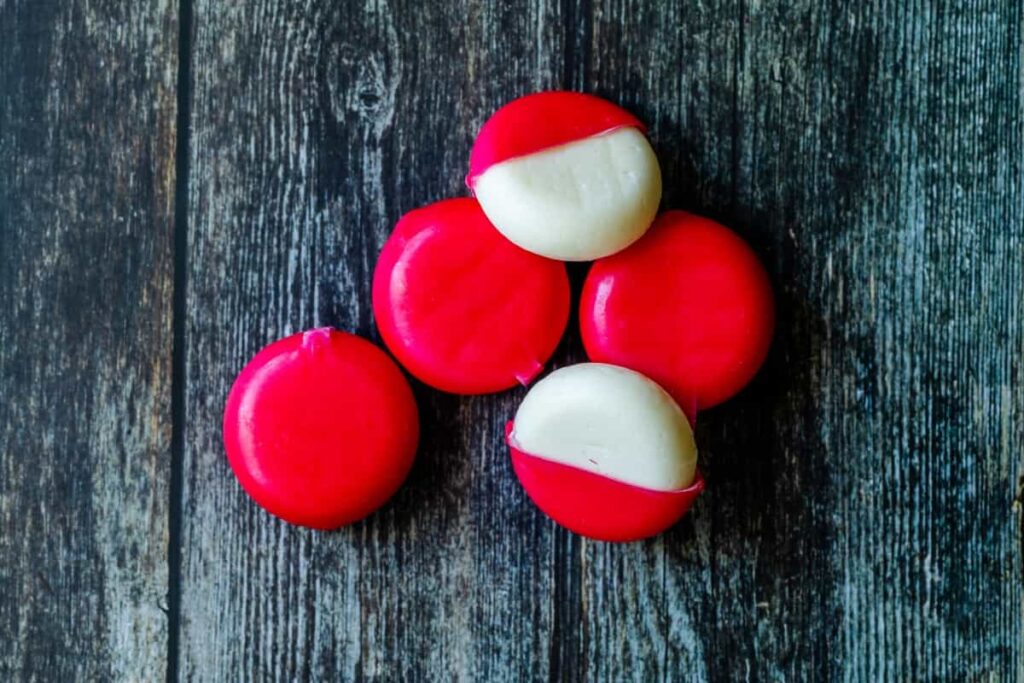
Canned/Packaged Meats
If you’re burnt out on jerky but still want to bring some meat on your hiking trip, then canned or pre-packaged meats might be the way to go. Not everyone is a fan of these options, but they can be very useful if you’re willing to give them a shot.
Options like packaged tuna or chicken (see on Amazon) pouches from Sunkist can be easy choices to bring along on your hike. They don’t need to be drained or cooked. Furthermore, these options can easily go into sandwiches or salads, so you can continue to switch things up without having to bring along too many ingredients. They’re also very light, so they won’t add too much extra weight to your pack.
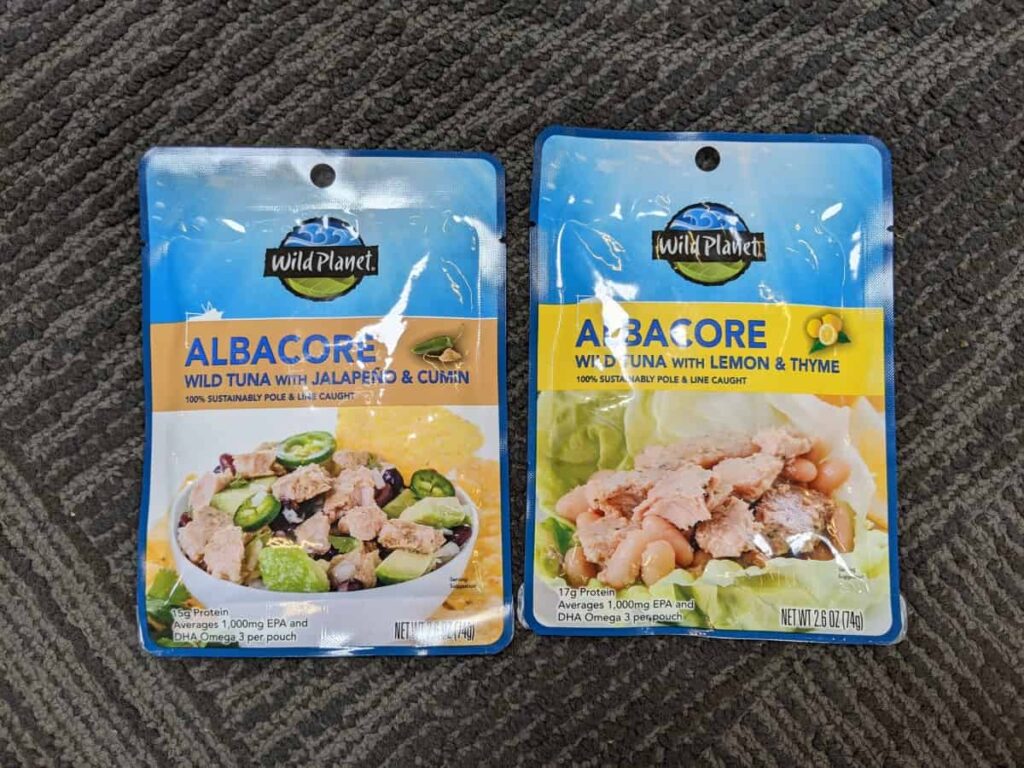
I was skeptical about using a chicken pouch at first. I think just trail-hunger tided me over–and they turned out to be pretty tasty with mayonnaise and salt and pepper.
You can get a couple of extra mayonnaise packets from any deli (you might have some in your car already).
Peanut Butter Pretzels
If you’re looking around your local grocery store for foods to take on a hiking trip, you’re likely to come across a container of pretzels filled with peanut butter. These delicious treats give you the benefits of peanut butter in a light, contained little bundle of pretzel.
Peanut butter pretzels are a great option for those who want to make sure their body gets what it needs without any prep. You can just pour some into a sandwich bag, or take the whole container if you feel like sharing. Just make sure that you have plenty of water on hand because the combination of peanut butter, dry pretzel, and salt can leave you feeling pretty thirsty. Make sure you bring plenty of water to stay hydrated. (How much water do you need while camping or hiking? I wrote an article with the answer here)
Even if you keep your stomach full and happy while you’re on your hike, you might end up incredibly hungry after the journey is over. Why is this? In our article here, we’ll take a look into why you’re so hungry after you’ve been hiking and what you can do about it.

